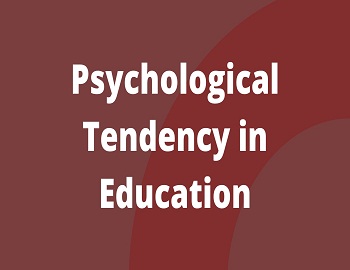Strong Points of the Dalton Plan of Education:
(1) Like the Montessori system, the Dalton Plan of Education is useful for the students between the age group of 8 to 12 years, as under this plan a provision has been made to impart education on an individual basis. The child acquires education, according to his ability, interests, energy and speed. He is kept away from the defects of the classroom teaching and he does not have to suffer the botherations of reading with others.
(2) Under this plan the child knows from beforehand what he has to do. Once has undertaken the ‘contract’, he is anxious to complete it. This gives him an idea of carrying out the responsibility and, therefore, he tries to complete it. The child has to remain active under this plan because he has to finish an assignment. He cannot shirk that responsibility.
(3) Self education is the backbone of this plan. Children learn to be self-dependent, self-reliant and acquire education by themselves. This not only gives them pleasure but prepares them for future life as well.
(4) The absence of the child from the class in the classroom teaching has an advanced effect on his progress of education because what has been lost during his absence cannot be repeated. But under Dalton Plan, he is free from such a disadvantage. He can pick up the thread of his work and keep his progress unhampered.
(5) This plan provides for specialization, according to the special interest of the children. If a boy is interested in Geography, he can study that subject with special interest and consult books and other materials concerning that subject. This also generates in the boy the tendency to find out the defects of his own. Such a tendency also brings about practical efficiency and the quality of leadership.
(6) There is no problem of discipline under this plan of education. Children remain engaged in their tasks, according to their interests. It is an accepted fact that when a child gets engaged in a work of his interest he finds little time to attend to mischiefs or cause indiscipline. Under this plan, the child is free to work in a free atmosphere without any interference from outside. There is no bondage of time or the periods. This plan is based on faith in the child and so this helps in establishing the equality of faith in the children.
(7) Under this plan, the relationship between the teacher and the taught is extremely happy. It is full of joy and brotherliness. The teacher helps the boy as and when required.
(8) There is no fear of examination under this plan. When a boy has finished his contract, he is promoted to the next higher class. The teacher, with the help of the graph is able to assess the progress of the child and there is no need for him to have a formal examination. Sometimes, it is said that the absence of an examination system does not bring about the spirit of healthy competition among the children, but this is sought to achieve with the help of the graphs. Graphs are incentives to inculcate in the children the feeling of healthy cooperation.
(9) Since there is no place for the home tasks in this scheme, the child does not try to run away from the task.
(10) Since the set-up of this Plan is democratic, it provides for education for democracy, which is the need of the hour.









Comments (No)